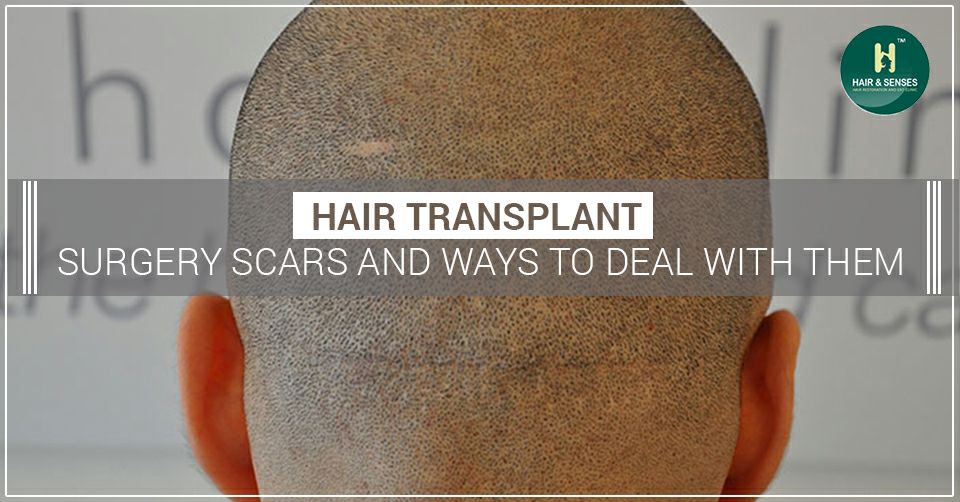Hair transplant: Surgery scars and ways to deal with them
September 12, 2017 | By Dr. Sangay Bhutia (Hair Transplant Specialist in Delhi)

Sometimes the fear of scarring is enough to keep people from getting a hair transplant; even those who are sure of getting it, are anxious about the scars. Given the advertising and marketing clout of transplant clinics, hair transplant procedures are often advertised as no-scar procedures. And that might not be true. Even though hair restoration is very technologically advanced; the truth is there is some amount of scarring because it is a surgery.
Biologically speaking, a scar signifies the process of wound repair on the skin and other tissues. Scarring is absolutely natural, and a part of the healing process. Which is not to say that you should have big scars from hair transplant, but some amount of scarring is inevitable.
Ideally the scarring from the transplant should be minimal, and it can be ensured by carefully choosing an experienced and reputable surgeon for the procedure. It also depends on the technology used to extract hair follicles from the donor areas of the scalp, and the body’s ability to heal.
The two most common technologies surgeons use for hair transplant today are FUT, or Follicular Unit Transplantation and FUE, or the Follicular Unit Extraction.
FUT Scars
As the name suggests, FUT involves extracting a strip of hair follicle bearing skin from the donor areas of the scalp, the back or sides of the head. The strip is divided into individual hair grafts, which are then transplanted onto the bald or balding areas.
The FUT method causes a thin linear scar. The scar starts to fade away in about a month, and will much lighter in a few months after surgery. But if precautions advised by the doctor are not exercised, it can lead to increase in width of the scar. Patient should do the pinching of stitch site after 3 weeks to improve the laxity of the skin and reduce the scar thickness
FUT scars can be well hidden if you don’t crop your hair too close. A lot of patients keep their hair slightly long till the scar fades.
The expertise of the surgeon is essential for FUT, as they can ensure that the donor area scar is as thin as possible and can be well camouflaged with longer hair in the surrounding areas on the scalp. A good surgeon can place and angle the grafts in a way that they follow the natural growth pattern of the surrounding hair, and make the look flawless, and conceal the scar.
FUE Scars
FUE involves the extraction of individual hair follicles from the donor areas and transplanting them onto the bald areas. FUE is a minimally invasive hair transplant technique, and the grafts are extracted using a precision tool. FUE patients are left with small dot-like circular scars in donor areas, where hair follicles are extracted. Depending on the number of hair follicles needed for the transplant, the number of scars can vary in different patients. They are usually spread over the donor area, and are less noticeable.
The scars in the transplanted area of the scalp are much less visible.
In patients who have had multiple transplants, doctors can also use the FUE technique to transplant hair into the scar area, so that it can become less visible and can be camouflaged.
The healing of the wound and the fading of the scars is contingent on the ability of the patient’s body to heal. In younger men the healing process might be faster than in older men, as is the case in any type of surgical scars.
In patients prone to keloids, or benign growths on the skin that form when scar tissue grows excessively, the healing process might be difficult. Doctors often dissuade people prone to keloids form getting a hair transplant.
Scar Repair
In cases where the patient is left with scars there are various methods to fix them, some of them being:
Scar repair using FUE
Using the FUE technique, hair follicles can be implanted onto the scar itself. Since FUE is a natural technique, the hair should grow back like normal hair and eventually cover the scar.
But the success of this procedure to conceal your scars is contingent on the fact that there is adequate blood supply to the scar area. A FUE transplant will work only if the follicles are able to adapt to the area, produce new hair, and not die, which is only possible if there is blood supply.
Trichophytic Closure
Trichophytic closure is used to reduce the donor site scar that is caused when strip excision is used for harvesting. This is basically an advanced surgical method of closure after the hair transplantation procedure that helps the scalp to heal tightly with as little visibility as possible.
This method involves carefully trimming the skin along the upper and lower edge of the strip harvest site, before suturing or stapling. It ensures that the scar is camouflaged faster than the traditional method that involves just putting the two sides back together.
Scalp Micropigmentation (SMP)
SMP is a simple cosmetic procedure that can be used for hiding scalp scars. It is a tattooing technique that uses fine dots that give the appearance of very short hair that can easily camouflage the scar.
The best way to prevent having a scar is to opt FUE over FUT, it may be more expensive but the scarring is minimal and can be easily camouflaged. The second important thing for either procedure is to choose the surgeon carefully.
Find an expert who will not just give you an aesthetically pleasing hairline, but also make sure that there is minimal scarring.
